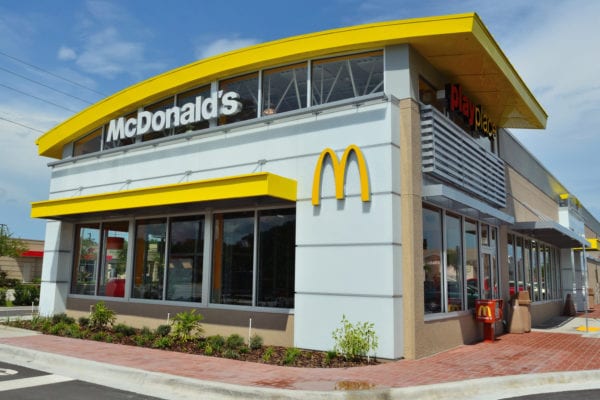Skift Take
Service-driven companies, like Grubhub, keep masquerading as technology or discovery platforms because current employment regulations haven't kept up with the rise of the gig economy. This helps no one.
— Kristen Hawley
“Grubhub Is Not a Delivery Company”
Grubhub COO Stan Chia says his company is not a delivery company. Instead, he testified during an employment-related trial, the company is a marketplace connecting diners with restaurants,” he said, according to Techcrunch. (The reason? The trial is about classifying delivery drivers as 1099 employees or W2 workers, which hinges, in part, on whether or not delivery is part of Grubhub’s core business.)
The struggle here isn’t unique to Grubhub. In a world where internet connectivity has changed every aspect of commerce, everyone’s a “tech platform for X,” with X as some way to discover some thing. Uber isn’t a taxi company, it’s a ride-sharing platform. Airbnb isn’t a hotel, it’s a platform for connecting travelers and hosts. Grubhub, according to its about section, “helps you find and order food from wherever you are. How it works: you type in an address, we tell you the restaurants that deliver to that locale as well as showing you droves of pickup restaurants near you.”
We could argue semantics all day, but this is bigger than the argument of whether or not Grubhub is a delivery company. These types of labor marketplaces are obviously here to stay, and employment law and regulations need to catch up. We don’t need another platform claiming to connect people with food. We all have “discovery engine” and “recommendation engine” fatigue. Grubhub’s value to the consumer is delivering food. All the recommendations and neighborhood discoveries it can provide do not matter to a Grubhub user, because they came to the app not to check out what’s going on or where they might find food, but to actually get that food and pay for someone to bring it to them. Let the service be the service and let the marketing jargon get out of the way, please.
Chili’s Is Ditching Nearly Half of Its Menu
Full-service chain restaurants aren’t having a great time lately, and the headlines say millennials are to blame. (More likely it’s that the way we dine and shop and travel and spend our leisure time is changing and also food discovery is changing and we don’t need to rely on easily-recognizable brands all the time and also mass-produced food is kind of gross, but that’s just my Xennial opinion.) Large, super-recognizable chains are in danger, and many of them are considering major operational changes. These changes, though, reflect larger industry trends that we can expect to see continue.
Chili’s is the latest to announce it’s reducing its menu by 40 percent, after a yearlong look at which items to keep and which to ditch. Mango tilapia with crispy asparagus and fried cauliflower are among the cut items, according to Bloomberg. Many of the other items removed from menus reflected foodie trends or fads that large chains seem to be trying hard to capture. (If this sounds like something you’ve heard before, it’s because you have, in this newsletter, two weeks ago.)
Ruby Tuesday recently announced a similar initiative, reducing its lunch menu offerings to hone in on what people are actually eating. And Applebee’s has announced it’s tired of trying to be trendy and please the millennials and willrefocus its business on its loyal, core audience. “What Americans want to eat doesn’t change that much. It’s the expectations that have changed,” Chili’s chief marketing officer, Steve Provost, told Bloomberg.
He’s right. We don’t need kale and avocado toast at every restaurant, but a chain burger or plate of baby-back ribs can be deeply satisfying at the right moment. Maybe when these restaurants stop trying to be everything to everyone and drill down on what its current diners actually want — i.e., do one thing and do it well — loyalty, visits, and satisfaction will rise.
Social Dining Service VizEat Scoops Up Rival EatWith
Speaking of tech platforms that connect people, Paris-based startup VizEat has acquired its U.S.-based rival EatWith to create what it calls the world’s largest social dining platform. Both companies offer marketplaces of food-themed events, enabling people to pay for immersive food experiences such as in-home dinners, cooking classes, and market tours — and both operate on a similar model: hosts (or chefs) list the experiences on the company’s site and the company takes a slice of the profits.
The companies did not disclose the terms of the deal, though one business newspaper says this was only a several hundred thousand-dollar deal. Still, the merge underscores the trend that in the dining-tech space, several larger, successful companies are beginning to emerge as market leaders. Whether VizEat will remain its own company or eventually become a part of a larger one, like Airbnb or TripAdvisor or another travel- and experience-based company is yet to be seen (though I’d bet on the latter).
Houston Restaurant Pros Share Best Practices to Help After a Disaster (like Harvey)
Last week, post-Harvey, group of Houston restaurant-industry professionals quickly banded together to help feed their community. I Have Food, I Need Food was made up of chefs, restaurant owners, suppliers, and volunteers who sourced and prepared food for storm victims in Houston. As of this week, the group is now connecting kitchens and shelters directly after facilitating over 250,000 meals post-storm.
In the wake of Hurricane Irma in Florida (and, presumably, others to come), the group behind the site and service have released a guide for others in the hospitality industry who may face disasters of similar scope. The team’s Disaster Plan for Restaurant Communities
outlines the entire process, from preparing for a storm or other disaster to the logistics of preparing and distributing meals. (The team will continue to update this document with additional learnings and recommendations.) Restaurant and hospitality communities are built on the foundation of bringing people together; trying times are no exception.
Digestifs:
- ICYMI, the four hottest restaurant trends of the summer, poised to shape the industry — Skift
- America’s first meat-free fast food restaurant is getting ready to expand — Fast Company
- The Japanese origins of modern fine dining — Eater



